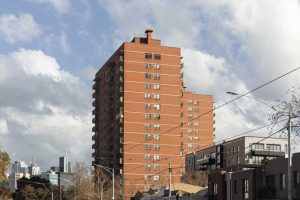Billions in aid still available to struggling renters

- More than $30 billion in rental assistance still hasn't been spent.
- What renters need to know about navigating the at-times convoluted and difficult application process.
To address the renters' crisis triggered by the Covid-19 pandemic, Congress has allocated more than $45 billion in aid.
More than six months after the money was authorized, most of it is still available.
Just around a fifth of the funding, or $10 billion, had reached households by the end of last month, new data by the U.S. Department of the Treasury shows.
That so much of that aid is still unspent doesn't mean renters aren't struggling anymore.
Some 12 million adults remain behind on rent payments, according to a recent report by the Center on Budget and Policy Priorities. One analysis over the summer found that the average renter in arrears owes around $3,700. In some areas, rental debts top $10,000 per household.
"There's certainly remaining need in most states and cities," said Diane Yentel, president and CEO of the National Low Income Housing Coalition.
More from Personal Finance:
What the first bitcoin futures ETF means for the cryptocurrency industry
How to estimate your monthly Social Security benefit increase for 2022
Bigger state and local tax cuts still possible as Democrats negotiate
However, efforts to disburse the money have been challenged by a lack of awareness and cumbersome applications, advocates say. Still, they say renters should not give up on getting the help.
Just applying for the aid can help you stay in your home longer.
In at least five states, those who've put in an application are entitled to some protection from being pushed out of their homes. Those states are Minnesota, Nevada, New York, Oregon and Washington state. Some of these policies offer renters a lot more time. Those with a pending claim in Minnesota, for example, can't be evicted until June 2022.
Here's what struggling renters need to know about accessing the relief.
How do I apply?
The National Low Income Housing Coalition has a state-by-state list of the more than 500 organizations giving out the federal money. The Consumer Financial Protection Bureau also has a new online tool to help you apply for the aid.
Who qualifies?
To be eligible, at least one member of your household has to qualify for unemployment benefits or attest in writing that they've lost income or incurred significant expenses due to the pandemic. You'll also need to demonstrate a risk of homelessness, which may include a past-due rent or utility notice.
In addition, your income level for 2020 can't exceed 80% of your area's median income, although states have been directed to prioritize applicants who fall at 50% or lower, as well as those who've been out of work for 90 days or longer.
Some state and local programs have set additional priorities, and you may want to search for those.
For example, one fund in California is targeting the relief at Native American households. Another in Oklahoma is sending the money out first to those over the age of 62.
How much could I get?
You could receive up to 18 months of assistance, including a mix of payments for back and future rent.
If you've already been approved for rental funds but continue to be behind, you can typically apply again as long as you're requesting relief for a different period of time. The money usually goes to your landlord, unless they refuse to comply (more on that below).
I'm having problems getting assistance. Why?
To begin, you're not alone.
Housing advocates point to a number of problems with the rollout of the assistance, particularly around some arduous application processes.
Andrew Aurand, vice president for research at the National Low Income Housing Coalition, said he saw one application that was 45 pages long. Another required renters to document their income over the last six months.
"Public officials are more concerned about so-called scammers getting this money than they are about the people who truly need it," said Dan Rose, an assistant professor of sociology at Winston-Salem State University and an organizer with Housing Justice Now.
If you're unable to meet a documentation requirement for one program's application or are denied aidfrom a certain fund, look for other rental assistance resources in your area, experts say.
It may also be worth reaching out to the organization and explaining why you can't come up with a particular form. The most recent guidance from the Treasury Department encourages programs to take people at their word, and more than half of them now allow for that so-called self-attestation.
"I wouldn't be surprised if a case worker could work with the tenant," Aurand said.
Yet another issue is that some landlords are refusing to accept the money from the programs because they don't want to agree to its terms, which can include a ban on evicting that tenant or raising their rent for a window of time.
Running into that problem?
Experts recommend that you ask the program if you can receive the funds directly. More than a quarter of programs are now allowing for so-called direct-to-tenant assistance.
I'm worried about eviction. What should I do?
Beyond applying for rental assistance as soon as possible, familiarize yourself with your rights. Those will vary by state.
The majority of states have lifted their eviction bans by now, but some are still in place. Most renters in New Jersey and New York can't be kicked out of their homes until January.
If your landlord has moved to evict you, try to get a lawyer.
You can find low-cost or free legal help with an eviction in your state at Lawhelp.org. In some places, including Washington state, Maryland and Connecticut, tenants facing eviction now have a right to counsel.
Are you struggling to get approved for rental assistance? If you're willing to share your story, please email me at [email protected]
Source: Read Full Article
